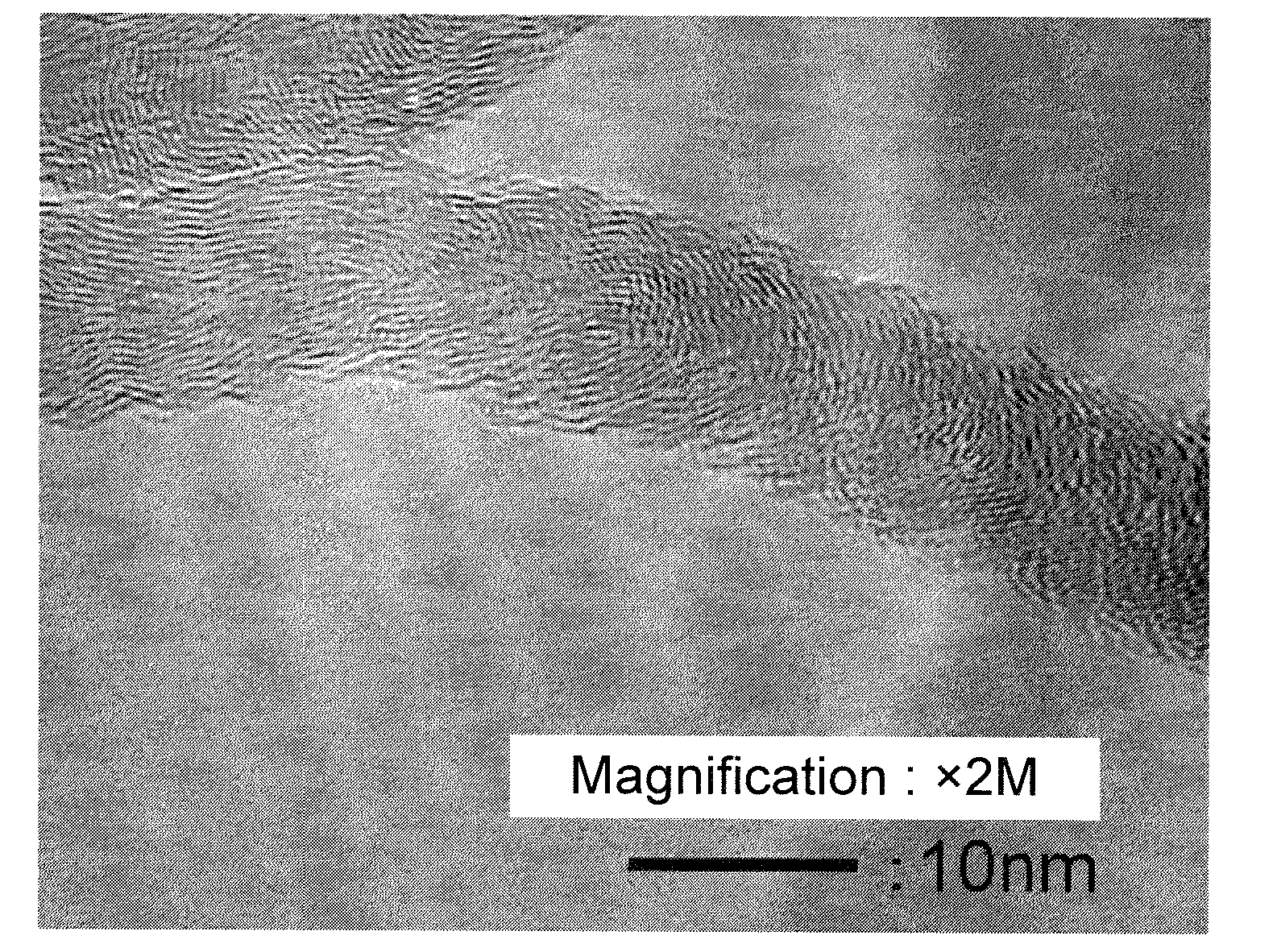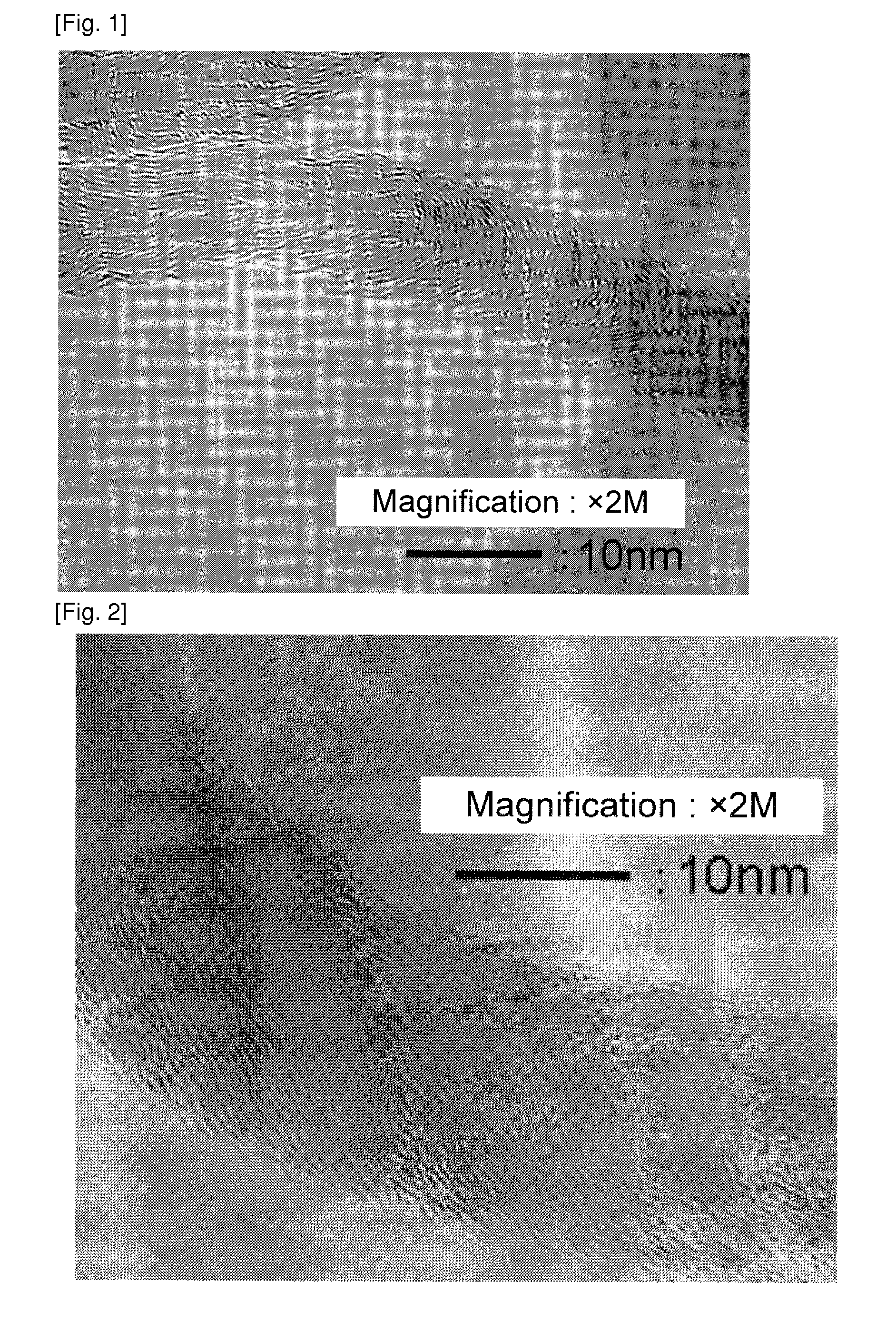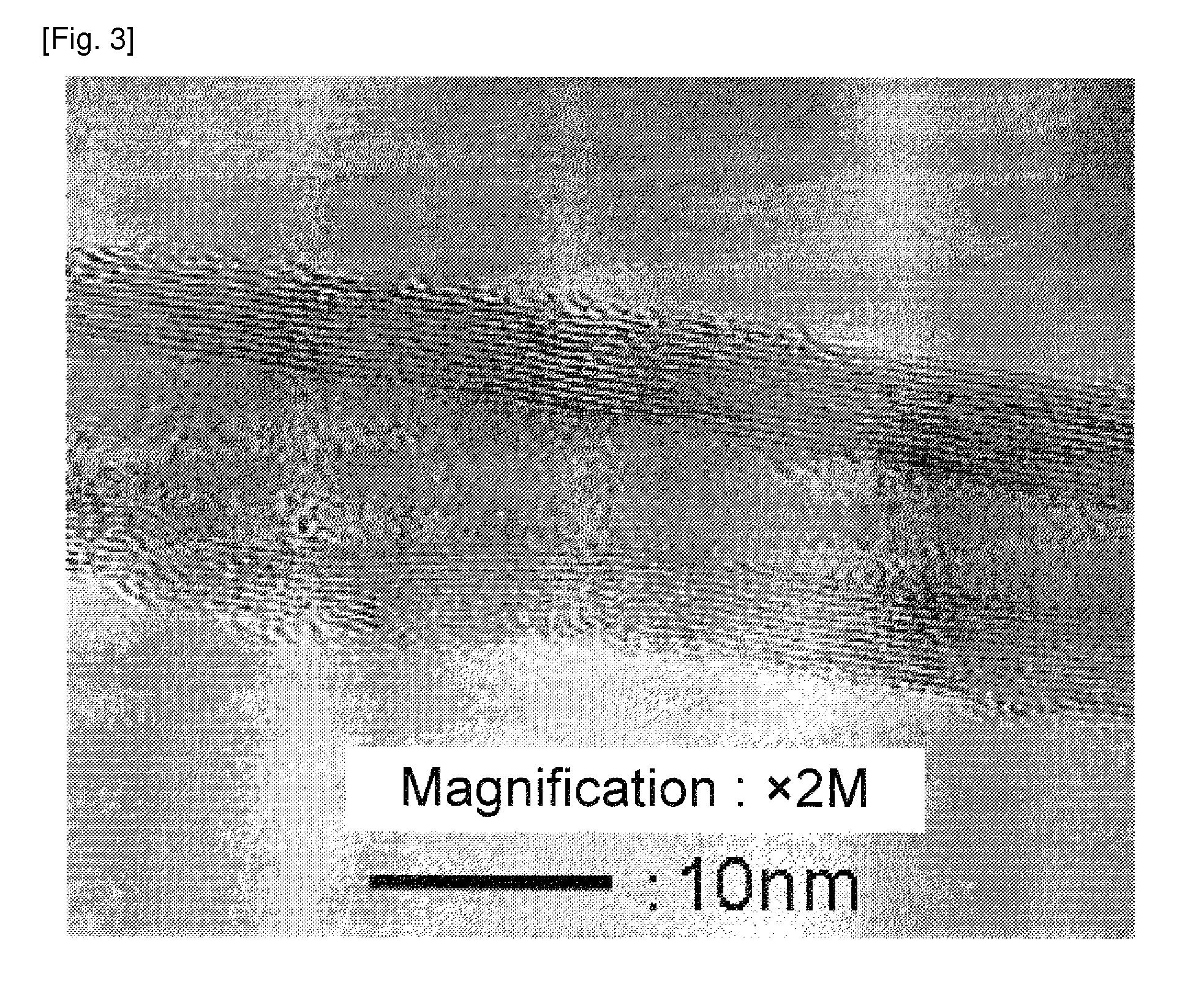Carbon nanofiber, producing method and use of the same
a carbon nanofiber and nanofiber technology, applied in the direction of catalyst activation/preparation, non-conductive materials with dispersed conductive materials, metal/metal-oxide/metal-hydroxide catalysts, etc., can solve the problems of high manufacturing cost, poor influence on the properties of resin materials, and increase in mechanical properties of composite materials such as strength and the like. , to achieve the effect of high heat conductivity, high electric conductivity and low cos
- Summary
- Abstract
- Description
- Claims
- Application Information
AI Technical Summary
Benefits of technology
Problems solved by technology
Method used
Image
Examples
example 1
[0123]In methanol, 0.36 part by mass of iron nitrate nonahydrate and 1.00 part by mass of cobalt (II) nitrate hexahydrate were dissolved. Moreover, 0.05 part by mass of ammonium metavanadate and 0.075 part by mass of hexaammonium heptamolybdate tetrahydrate were added and dissolved so as to obtain a catalyst preparation solution.
[0124]The catalyst preparation solution was dripped and mixed with 1 part by mass of gamma-alumina (AKP-G015; made by Sumitomo Chemical Co., Ltd.). After the mixing, it was vacuum-dried at 100 degrees C. for 4 hours. After the drying, it was crushed in a mortar and pestle so as to obtain a catalyst. The catalyst contained 10% by mol of Mo and 10% by mol of V with respect to the total amount of Fe and Co, and 5% by mass of Fe and 20% by mass of Co were supported by the gamma-alumina.
[0125]The weighed catalyst was placed on a quartz boat, and the quartz boat was put in a tubular reactor made by quartz and the vessel was sealed. While a nitrogen gas was made to...
example 2
[0128]A catalyst was obtained by the same manner as in Example 1 except that the catalyst preparation recipe was changed to that as shown in Table 1. Using the catalyst, a carbon nanofiber was obtained by the same manner as in Example 1. A carbon nanofiber with low impurity amount was obtained. The result is shown in Table 1. An image observed by the transmission electron microscope of the carbon nanofiber obtained in Example 2 was similar to that in FIG. 1.
examples 3 to 5
[0129]A catalyst was obtained by the same manner as in Example 1 except the change to the catalyst preparation recipe as shown in Table 1. A carbon nanofiber with a low impurity amount was obtained. The result is shown in Table 1. An image observed by the transmission electron microscope of the carbon nanofiber obtained in Example 3 was shown in FIG. 2. Images observed by the transmission electron microscope of the carbon nanofiber obtained in Examples 4 and 5 were similar to that in FIG. 2.
[0130]Since the graphite layer was corrugated or curved, an approximate line was drawn in the vicinity of the carbon nanofiber surface, and an angle formed by the approximate line and the fiber axis was measured, which was approximately 20 to 35 degrees. Most of the carbon nanofiber had hollow portions.
PUM
| Property | Measurement | Unit |
|---|---|---|
| diameter | aaaaa | aaaaa |
| thickness | aaaaa | aaaaa |
| thickness | aaaaa | aaaaa |
Abstract
Description
Claims
Application Information
 Login to View More
Login to View More - R&D
- Intellectual Property
- Life Sciences
- Materials
- Tech Scout
- Unparalleled Data Quality
- Higher Quality Content
- 60% Fewer Hallucinations
Browse by: Latest US Patents, China's latest patents, Technical Efficacy Thesaurus, Application Domain, Technology Topic, Popular Technical Reports.
© 2025 PatSnap. All rights reserved.Legal|Privacy policy|Modern Slavery Act Transparency Statement|Sitemap|About US| Contact US: help@patsnap.com



